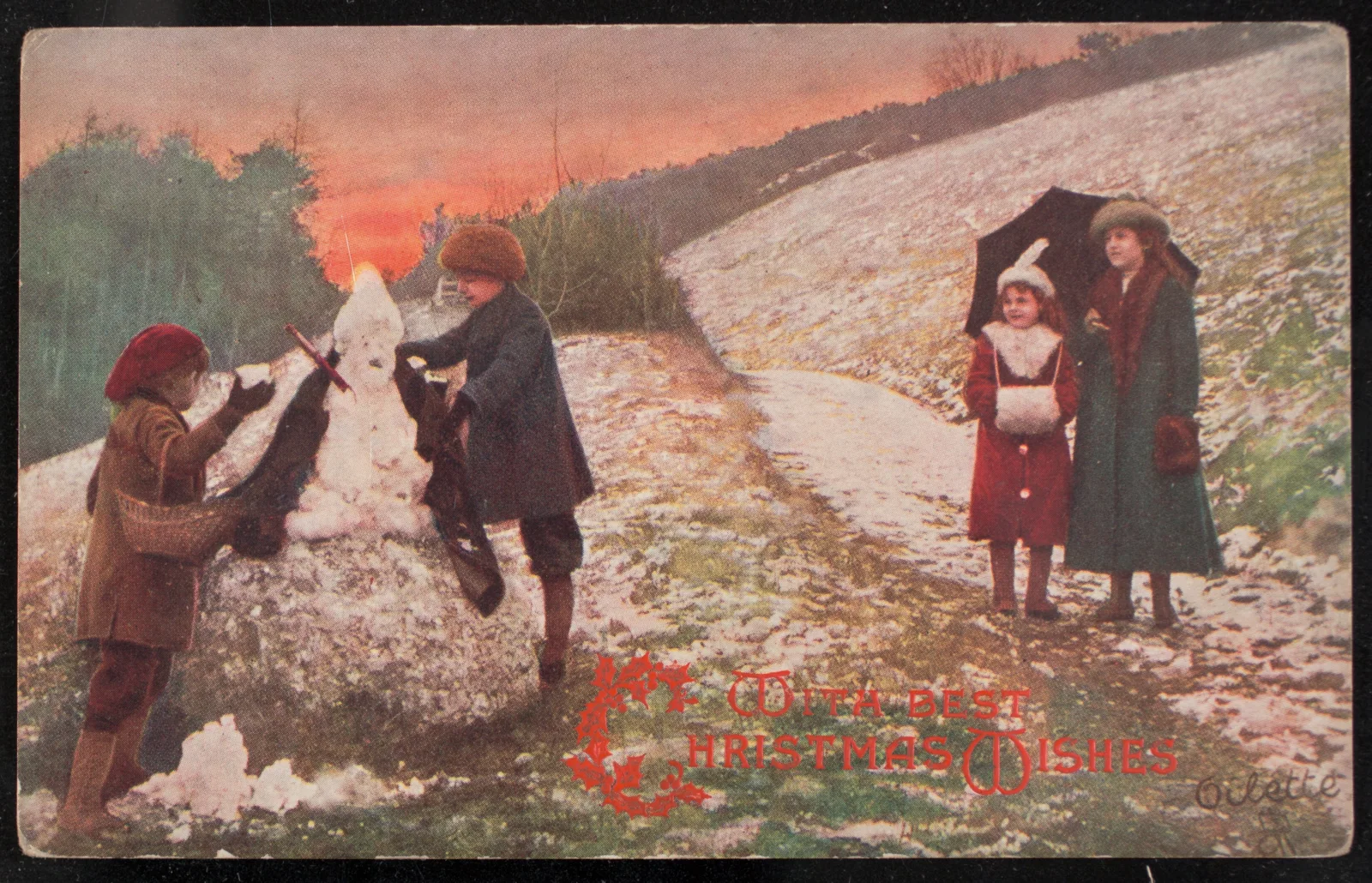The Newberry has launched a digital archive of over 26,000 high-quality images of picture postcards produced by pioneering British company Raphael Tuck & Sons during the first half of the 20th century. Drawing on a vast archive of postcards received by the Newberry in 2016 and developed with the support of Leonard A. Lauder, the new digital collection provides users with a comprehensive body of material for investigating the ways in which British citizens formed and disseminated their perceptions of the world 100 years ago.
A distinguishing feature of the collection is the presence of thousands of "Oilettes”—postcards displaying versions of specially commissioned oil paintings. Touted by Raphael Tuck & Sons as "veritable miniature oil paintings," the Oilettes depict landscapes, seascapes, pastoral scenes, and city streets, both in Great Britain and abroad. In addition to tourist destinations, the cards also feature scenes of domestic life, holidays, and humorous images, including a few dozen reproductions from Punch magazine.
Users can search and browse the postcards instantly with just a few keystrokes. Along with fully searchable titles and descriptions, the collection is also accessible through thousands of subject headings, including "ruins,""gardens,""markets,""crowds,"and "mosques.”
"The launch of the Leonard A. Lauder Collection of Raphael Tuck & Sons Postcards ensures a deep level of access to an archive of popular visual culture produced by a company that sought to provide art to a mass public,"said Alice Schreyer, Vice President for Collections and Library Services at the Newberry. "We’re grateful to Mr. Lauder for his role in making this valuable digital resource available to scholars and members of the public everywhere.”
Released under the Newberry’s open access policy, images from the digital collection are made freely available for re-use without permissions or licensing fees required by the library. In alignment with this policy, the Newberry elected to publish the entire Oilette collection to Internet Archive, a free digital platform that boasts 6.1 million users around the world. In so doing, the Newberry hopes to reach new audiences across the globe and stimulate interest in a type of ephemera that is too often overlooked by scholars.
The new resource not only provides access to high-quality images of the postcards but also makes the contents of the Oilette collection easily searchable through the addition of comprehensive metadata—identifying information (like titles, captions, and subject classifications) associated with each Oilette.
To create metadata for the more than 26,000 items in the collection, Newberry staff used OCR (optical character recognition) software for some tasks and also organized a crowdsourced transcription internship through which library science students gained hands-on experience. With the help of 56 interns, the Newberry generated high-quality metadata for each digitized item in the Oilette collection, enhancing the accessibility of the items and creating a trove of data that will support future digital humanities projects.
"The Newberry’s postcard collections are an invaluable onsite resource for scholars of visual culture, local history buffs, and genealogists,"said Jennifer Dalzin, the Newberry’s Director of Digital Initiatives and Services. "We’re excited to send these postcards back out into the world to serve even more audiences online.”
